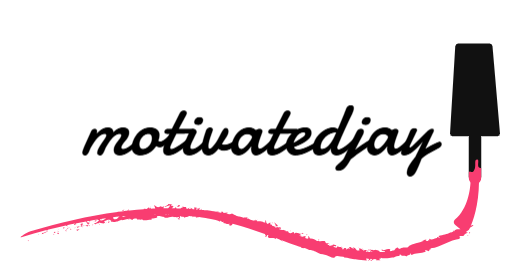In a world that often feels like it’s spinning at breakneck speed, the search for activities to combat anxiety is more relevant than ever. If you find yourself grappling with anxious feelings more frequently than you’d prefer, know that you are far from alone. The World Health Organization has spotlighted anxiety as the most prevalent mental illness. And as women, we seem to bear a particularly heavy burden. In 2023, a staggering 32 percent of U.S. women reported feeling anxious, compared to 24 percent of men.
I have firsthand experience with the paralyzing grip of anxiety. I’ve openly shared my own battles in the past, and unfortunately, one of my children has also faced intense bouts of it. This subject is incredibly close to my heart, and I’m committed to raising awareness and offering support. The increasing rates of anxiety, especially among kids and girls, are deeply concerning. My hope is that through Lindywell and by highlighting other valuable resources, we can make a real difference and push back against these rising numbers.
While professional help is often the best initial step, there are also practical tools you can use at home to find relief on a daily basis and in those moment – to – moment anxious spells.
The Power of Mindfulness in Battling Anxiety
Cultivating a mindfulness practice can be a game – changer in how we deal with anxiety. It equips us with the ability to reframe those pesky anxious thoughts, gradually restoring a sense of calm. Research has shown that consistent daily mindfulness training can dial down the arousal of our nervous system and fortify the functional brain circuits, providing relief from anxiety at a neurological level. If you’re eager to learn more about mindfulness and how it regulates the nervous system, our recent blog posts offer a wealth of insights, such as “How to Cultivate an Attitude of Gratitude With Mindfulness” and “How to Overcome Morning Anxiety for a Brighter Start.”
10 Mindful Activities for Anxiety Relief
At Lindywell, we firmly believe that any wellness or self – care activity can transform into a mindfulness practice when approached with intentional awareness. This means being fully present, tuning in to the mental, emotional, and physical sensations that surface during the activity, even when it’s challenging. Today, I’m excited to share 10 mindful activities that are particularly effective in relieving anxiety and can be easily done in the comfort of your own home, helping you regain balance and a sense of true well – being.
Disclaimer: Depending on the frequency and severity of your anxious thoughts, working with a licensed therapist or accessing other resources might be beneficial. You can reach out to a free, confidential mental health hotline available 24/7 or search for a therapist in your area on Psychology Today.
1. Pilates Workouts
Pilates is not just an exercise; it’s a holistic experience. It combines smooth, gentle movements with deep concentration. The beauty of Pilates lies not in pushing yourself to achieve a specific outcome but in being attuned to how your body and muscles feel with each motion, allowing your body to be your guide. While it’s great for building strength (and our members adore this aspect), Pilates also sharpens the mind and releases endorphins, acting as a natural mood stabilizer. This can significantly ease symptoms of depression and anxiety. Moreover, it’s highly adaptable, making it accessible to everyone, including those with chronic pain or mobility issues, who are looking to move in a way that supports anxiety relief.
2. Gardening
There’s an inherent magic in our connection to nature, and gardening harnesses this magic to promote mental well – being. The simple act of touching the earth and witnessing new life sprouting can be incredibly therapeutic. Studies have shown that gardeners are more likely to have high emotional resilience and lower rates of depression, anxiety, and chronic stress. Even if you don’t have a sprawling backyard or access to a communal garden, you can still bring the joy of gardening to your balcony, patio, or window sill.
3. Creative Projects
Unleashing your creativity, whether it’s through painting a sunset, crocheting a scarf, writing a poem, or coloring in a book, can work wonders for your mental health. Research in the Cureus Journal has established a direct link between artistic expression and enhanced self – esteem, which can help alleviate chronic mental health distress. Remember, creativity is not about perfection. Let your imagination run wild and enjoy the process. This freedom is what makes creative pursuits such a powerful activity for anxiety relief.
4. Puzzles or Brain Games
Games that demand deep concentration, like puzzles, sudoku, brain teasers, or word searches, can be excellent allies in the fight against anxiety. They strengthen the brain’s prefrontal cortex, improving decision – making, flexible thinking, and problem – solving skills. These mental faculties enable you to counter impulsive reactions and anxious ruminations before they spiral out of control. The key is to choose games that are low – pressure, as timed games can actually increase stress cortisol levels.
5. Journaling
When an anxious thought, emotion, or belief threatens to paralyze you, grab a journal. Translating that abstract feeling into concrete words can make a world of difference. Even if you can only manage a few sentences, it becomes easier to process what triggered the anxiety and determine if the fear is grounded in reality. A recent study found that journaling daily for a month can effectively manage anxiety and post – traumatic stress symptoms.
6. Gentle Stretches
There are days when you simply don’t have the physical or mental energy for an intense workout, and that’s perfectly normal. On such days, gentle full – body stretches can be a godsend. They relieve tension and boost circulation, increasing relaxation, calmness, and overall mood. Move with slow, mindful precision, focusing on each sensation as your muscles contract and lengthen. If you want to access a great collection of restorative workouts and stretches, start a Lindywell free trial. You’ll get instant access to over 350 Pilates workouts, including a dedicated section for days like these.
7. Body Scanning
Our physical, mental, and emotional health are intertwined, and anxiety often manifests physically. You might experience a headache, stomach nausea, tight shoulders, sweaty palms, or chest and throat constriction. Body scanning helps you become aware of where you’re holding tension. By directing compassion to these areas, you can alleviate discomfort and reduce cortisol levels, thus regulating stressful or anxious emotions.
8. Conscious Breathwork
Breathwork is a powerful somatic practice. Tuning in to the natural rhythm of your breath can have a profound impact. Slow diaphragmatic breaths can lower blood pressure and heart rate, soothing the autonomic nervous system arousal and restoring balance. You can make your deep breathing more somatic by trying simple exercises. Notice how your stomach and lungs fill and empty as you inhale and exhale. Tune into your senses during the process. Before breathing, choose a point in your body to direct the breath, along with feelings of peace or compassion.
9. Music Appreciation
Whether you’re strumming a guitar or listening to your favorite album, music has remarkable healing powers. There’s a reason your favorite song can lift your spirits or a slow ballad can soothe you when you’re feeling down. As a therapeutic intervention, music exposure has been shown to boost self – esteem, resilience, emotional regulation, life satisfaction, and subjective well – being. So, turn on a tune that makes you smile and watch as it drowns out those anxious thoughts. For me, “September” by Earth, Wind and Fire always does the trick!
10. Somatic Shaking
This might seem a bit strange at first, but somatic shaking is a practice I truly love. It involves moving from head to toe in primal, free – flowing motions to shake off built – up tension. It can be a valuable tool for processing trauma and also helps reduce the impacts of anxiety, depression, and other mental health concerns. There’s no set formula. Just relax your muscles, let go of inhibitions, and move your body in any way that feels right.


